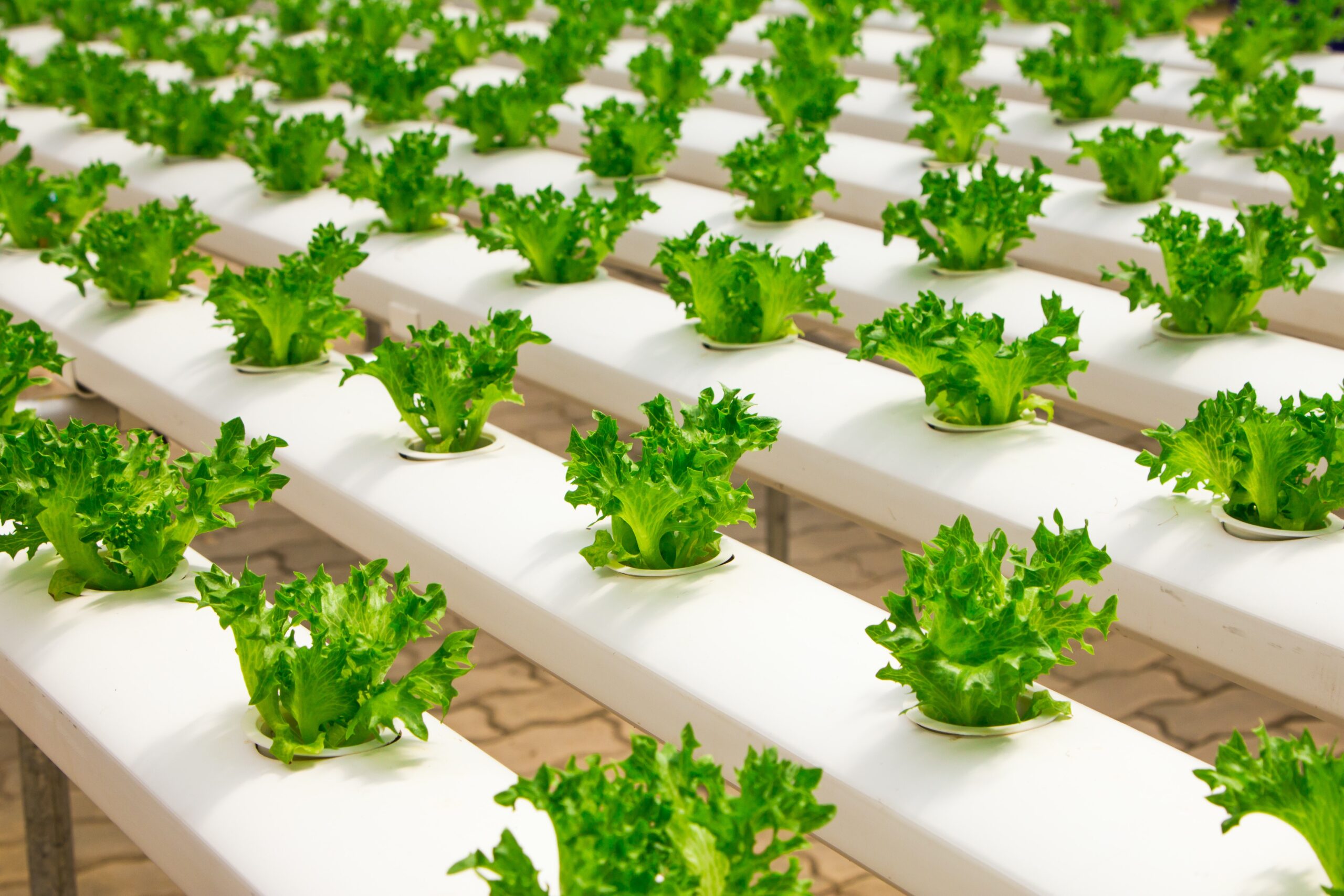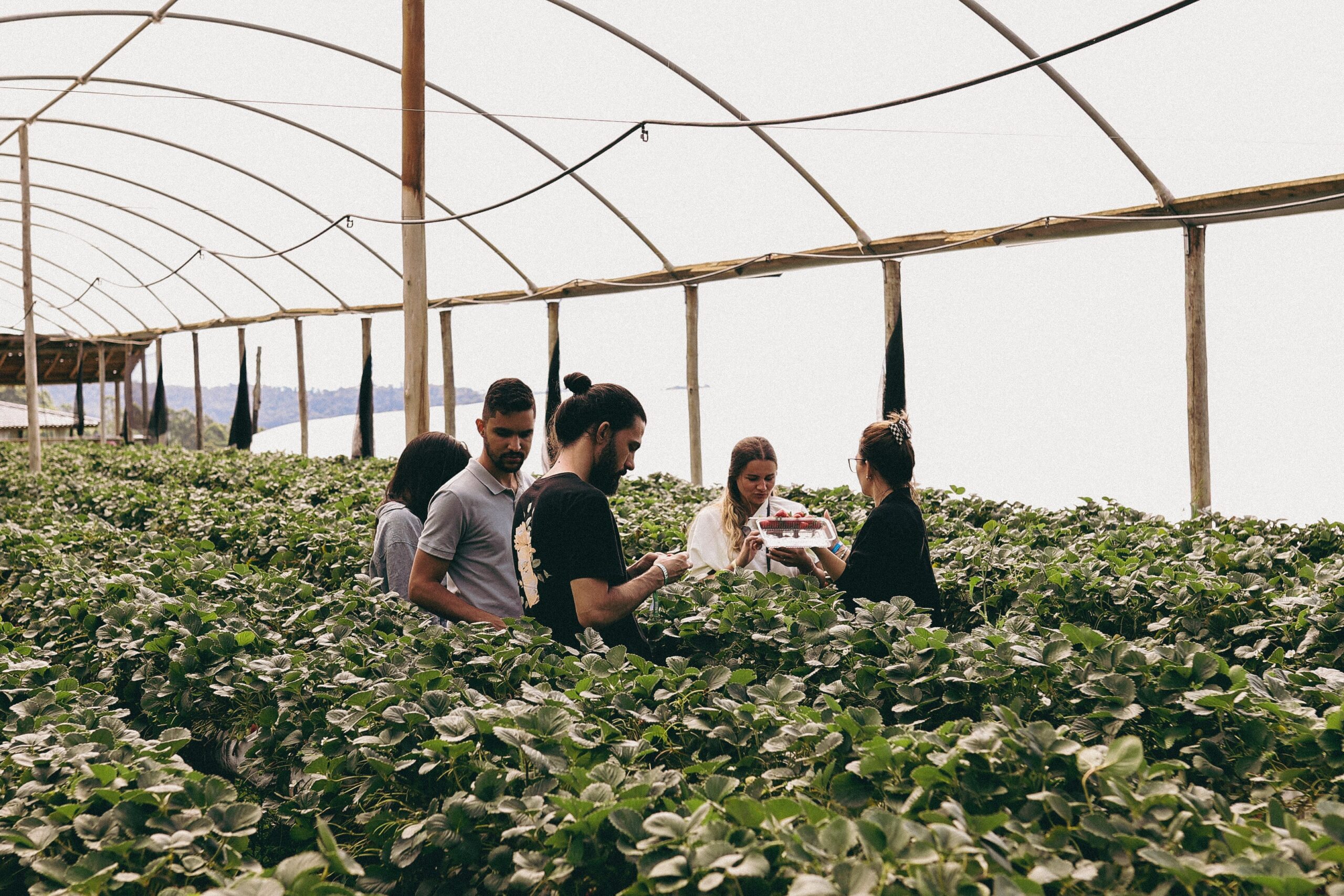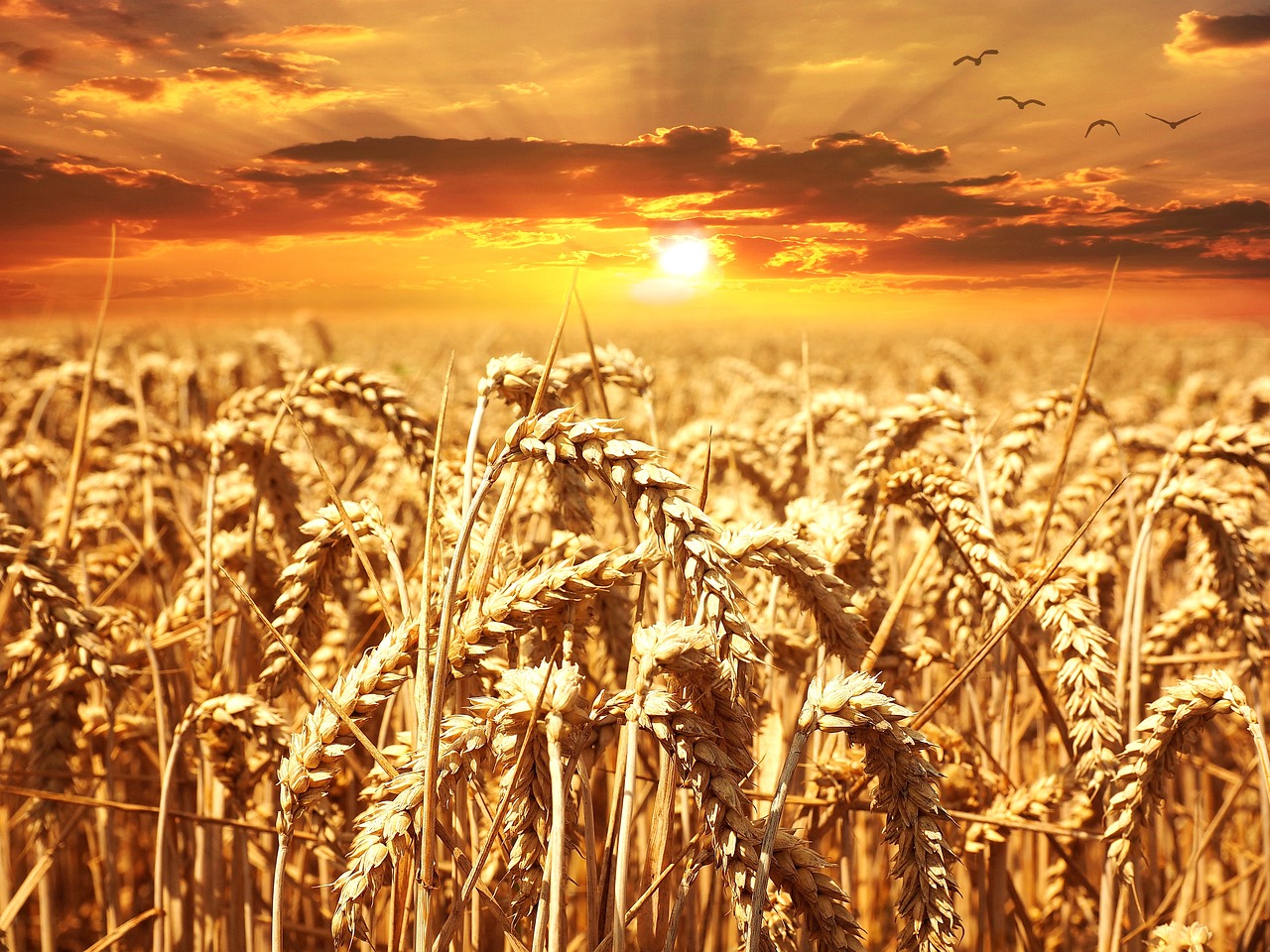Welcome, dear readers. We’re about to embark on an exciting journey, diving headfirst into the world of agriculture trade shows. These dynamic events are much more than mere gatherings of farmers and agricultural enthusiasts. Instead, they’re a showcase of innovation, teeming with bright minds and emerging technologies shaping the future of farming. And speaking of the future, we can’t ignore a significant player revolutionizing the field: Vertical farming.
Now, I know what you might be thinking: “Vertical farming? Isn’t that just plants on a skyscraper?” Well, not exactly. Vertical farming is a concept that merges technology with agriculture, aiming to solve some of the most pressing challenges of our time: food security, sustainability, and urbanization. It’s a vast and multifaceted topic, one we’re going to dissect and understand piece by piece. We’ll look at its potential, its benefits, its challenges, and most importantly, why it’s stealing the spotlight at agriculture trade shows worldwide.
When we talk about “Vertical Farming Potential,” we’re talking about an entirely new frontier in agriculture. It’s about reshaping our approach to farming in ways we never thought possible. Ready to dig in? Here we go!
Unpacking the Basics of Agriculture Trade Shows
If you’ve never attended an agriculture trade show, it’s an experience unlike any other. Imagine stepping into a bustling world where the earthy smell of soil merges with the sharp tang of freshly-cut hay, a place where the latest tractor models gleam under bright spotlights, and booth after booth offers glimpses into technological advancements shaping our farming future. It’s a meeting point, a confluence of ideas, and a celebration of an industry that is as old as human civilization yet remains at the forefront of innovation.
What makes these trade shows special, you ask? Firstly, it’s the sheer diversity of the participants. You have everyone from seasoned farmers eager to share their wisdom to fresh-faced start-ups introducing groundbreaking technologies. You’ll see corporate giants unveiling the latest machinery alongside passionate organic farmers advocating for sustainable practices. And then there’s the thrill of meeting researchers and academics eager to share their findings on how to feed an ever-growing global population sustainably. It’s this blend of tradition and modernity, of knowledge and innovation that makes these trade shows the heartbeat of the agricultural industry.
But let’s get down to specifics. What happens at these trade shows? Well, they’re much more than a display of shiny new equipment. They are stages for knowledge sharing, featuring presentations, workshops, panel discussions, and live demonstrations. Each event and each discussion is an opportunity to learn about emerging trends, industry challenges, and how to overcome them. Many shows also host competitions where innovators pitch their ideas, and the winners secure funding to bring their concepts to life. It’s about fostering an environment that encourages dialogue, collaboration, and growth.
And in recent years, one particular concept has emerged from these competitions, making waves in the industry and becoming a hot topic of conversation – Vertical Farming. That’s where our discussion takes us next.
The Concept and Potential of Vertical Farming
As we’ve immersed ourselves in the energetic world of agriculture trade shows, you may have heard a term bouncing around more frequently – vertical farming. But what exactly is it? Simply put, vertical farming is the practice of growing crops in vertically stacked layers, often integrated into other structures like skyscrapers, shipping containers, or repurposed warehouses. It’s essentially farming upwards rather than outwards.
Now, I hear you ask, why would we want to farm in a skyscraper? The answer lies in addressing some of the pressing challenges of our time, and that’s where the Vertical Farming Potential comes into play.
Our world’s population is growing rapidly, and with it, the demand for food. Traditional farming practices, while valuable and time-tested, are increasingly under strain to meet this demand. We’re facing challenges like soil degradation, water scarcity, climate change impacts, and the loss of arable land. Enter vertical farming – a solution that offers a new approach to tackle these problems head-on.
Vertical farming offers the potential for higher yield per square foot compared to traditional farming. By growing up instead of out, you can produce more food in a smaller space. Think about it like a multi-story car park – you’re parking more cars on the same ground footprint by making use of the vertical space. The same principle applies here.
Moreover, vertical farming is not limited by seasons or weather. Crops can be grown year-round in a controlled environment, providing consistent, reliable produce regardless of whether it’s a sunny summer day or a frosty winter night outside. In times of increasingly unpredictable weather due to climate change, this reliability is invaluable.
One of the key features of vertical farming is that it can be done anywhere – from bustling city centers to remote desert locations, provided you have the necessary resources. This means that we can bring the farm to the city, reducing the distance that food has to travel from farm to table, which can significantly cut down on transport emissions.
There’s no denying that vertical farming brings to the table a plethora of opportunities and benefits. But that’s not to say it’s without its challenges.
Understanding the Challenges of Vertical Farming
As promising as vertical farming may be, we must acknowledge that it’s not without hurdles. You see, every solution comes with its own unique set of challenges, and vertical farming is no different. It’s crucial that we understand these issues, discuss them openly, and innovate solutions.
The first challenge we often encounter is the high start-up and operational costs. Vertical farms, particularly those integrated into skyscrapers or other urban structures, require a significant investment to set up. The cost of retrofitting an existing building or constructing a new one, and installing the necessary equipment for growing, lighting, and climate control, can add up quickly. Operating costs too can be substantial, with electricity for lighting and climate control systems being major components.
The second challenge ties into sustainability. Yes, vertical farming can potentially reduce water usage and transport emissions. But we also need to consider the energy usage of these farms. Many vertical farms rely heavily on artificial lighting and climate control systems, both of which consume significant amounts of energy. The question then arises: How can we make these systems more energy-efficient, or better yet, can we power them using renewable energy?
The third challenge involves the complexity of growing certain crops in a vertical setup. While we’ve seen great success with crops like lettuce, herbs, and some fruits like strawberries, others like grain crops or root vegetables are more difficult to grow vertically due to their size or growth characteristics.
It’s clear that while the potential of vertical farming is immense, the path to realizing this potential is strewn with challenges. But here’s the good news: These challenges are not insurmountable. And this is precisely where agriculture trade shows come in – platforms for innovators to come together, share ideas, and find solutions.
The Role of Agriculture Trade Shows in Promoting Vertical Farming
You might remember that we started our journey by diving into the world of agriculture trade shows. Well, it’s time to circle back to these vibrant hubs of innovation and see how they’re playing a pivotal role in addressing the challenges of vertical farming and promoting its potential.
Agriculture trade shows are much more than a venue for showcasing the latest machinery or technologies. They are forums for learning, discussion, and collaboration. And this is precisely what vertical farming needs – a platform to share knowledge, foster innovation, and cultivate partnerships.
Trade shows provide an excellent platform for start-ups and researchers in the field of vertical farming to demonstrate their innovations, be it in the form of new cultivation techniques, energy-efficient lighting systems, or advancements in hydroponics and aeroponics. By doing so, they not only attract potential investors but also spark discussions around these technologies, encouraging further innovation and improvement.
But it’s not just about showcasing new technologies. Agriculture trade shows also host panel discussions, workshops, and presentations around vertical farming. These forums allow experts in the field to share their experiences, discuss the challenges they’ve faced, and how they’ve overcome them. For anyone looking to venture into vertical farming, the knowledge and insights gained from these discussions are invaluable.
Moreover, trade shows facilitate networking. They bring together a diverse group of people – farmers, researchers, tech innovators, investors, and policymakers, all under one roof. Such diversity opens up opportunities for collaboration, be it in the form of research partnerships, funding agreements, or policy dialogues. In the face of challenges as complex as those posed by vertical farming, such collaborations are vital.
In essence, agriculture trade shows serve as a catalyst in the growth and development of vertical farming. They provide the much-needed platform for innovators in the field to showcase their solutions, learn from each other, and collaborate.
A Glimpse into the Future – What’s Next for Vertical Farming?
As we delve deeper into the world of vertical farming, you might be curious about what the future holds. It’s a question that sparks many a conversation at agriculture trade shows and for good reason. With an idea as revolutionary as vertical farming, it’s only natural to wonder where we’re headed.
The Vertical Farming Potential is immense, and we’ve only just scratched the surface. While we have made significant strides in developing this technology, there’s still a long way to go.
In the future, we could see vertical farms become a common sight in our cities. Imagine skyscrapers not just housing offices or apartments, but also farms growing fresh produce. You could be buying your groceries from a store in your building’s ground floor, where the produce is grown just a few floors above. This could drastically reduce the carbon footprint of our food by minimizing transportation and storage requirements.
We also foresee advancements in the technology used in vertical farming. For instance, we could see improvements in artificial lighting solutions, making them more energy-efficient and better suited to the needs of different crops. Innovations in hydroponics and aeroponics could enable us to grow a wider variety of crops in vertical farms, including those that are currently challenging to cultivate.
The future could also see vertical farms playing a crucial role in tackling food security issues. By setting up vertical farms in urban areas, we can bring food production closer to consumers, ensuring a reliable supply of fresh produce year-round.
Moreover, as our understanding of plant biology and agronomy improves, we can optimize growth conditions in vertical farms to improve crop yields and nutritional content. Imagine growing “superfoods” with enhanced nutritional profiles right in the heart of our cities!
All this being said the future of vertical farming is not just about technological advancements. It’s also about collaboration – between farmers, researchers, innovators, policymakers, and consumers. It’s about creating an ecosystem that fosters learning and innovation, and that’s exactly where agriculture trade shows shine.
How You Can Be Part of the Vertical Farming Revolution
If you’ve been following along with us, you might be wondering how you can be part of this exciting vertical farming revolution. The beauty of this field is that there are numerous ways for you to contribute, regardless of your background. It’s this diverse array of perspectives that fuels innovation and drives the industry forward.
Attending agriculture trade shows is a fantastic starting point. These events offer an invaluable opportunity to learn about the latest trends and technologies in vertical farming. Whether you’re a farmer looking to diversify your operations, a researcher seeking to understand the science behind vertical farming, or a consumer curious about where your food comes from, there’s something for everyone at these shows.
Are you a tech enthusiast? The field of vertical farming is ripe with opportunities for technological innovation. From developing more energy-efficient lighting systems to designing advanced automation tools, there’s a wide array of areas where you can contribute.
If you’re a researcher or academic, there’s much to be explored in the science of vertical farming. From studying plant growth under different light spectra to understanding the optimal nutrient mix for hydroponics, the research possibilities are endless.
For entrepreneurs and investors, vertical farming offers an exciting and socially responsible investment opportunity. By supporting start-ups in this field, you’re not just betting on a promising industry; you’re also contributing to a solution that could address some of our most pressing environmental and food security challenges.
And let’s not forget the role of consumers. Your choices can drive demand for vertically farmed produce, encouraging more producers to adopt this technology. By choosing locally grown, sustainable produce, you’re voting with your wallet for a more sustainable and resilient food system.
As you can see, the vertical farming revolution is not just about farmers or scientists. It’s about all of us. So, are you ready to roll up your sleeves and join us?
Success Stories in Vertical Farming
Now that we’ve walked through the concept, potential, challenges, and future of vertical farming, let’s take a moment to celebrate some of the success stories in this field. After all, there’s no better way to appreciate the Vertical Farming Potential than by looking at the triumphs of those who have embraced this technology.
One notable success story is AeroFarms, a company based in Newark, New Jersey. They have turned a former steel mill into the world’s largest indoor vertical farm, producing greens and herbs on a massive scale. Their system, which uses aeroponics and LED lighting, has set the bar high in terms of what can be achieved with vertical farming.
Then there’s Plenty, a San Francisco-based company that’s making waves in the vertical farming industry. With backing from tech giants like Amazon’s Jeff Bezos, Plenty’s approach focuses on energy-efficient LED lighting and machine learning to optimize crop growth. The result? Yields that are reportedly up to 350 times greater than traditional farms, on a fraction of the land and with significantly less water.
Across the pond in Europe, Infarm is bringing vertical farming to supermarkets and restaurants. Their modular vertical farms can be found right in the grocery aisle, providing consumers with ultra-fresh produce and a tangible connection to how their food is grown.
And it’s not just the Western world that’s embracing vertical farming. Sky Greens in Singapore is Asia’s first low-carbon, hydraulic-driven vertical farm, proving that this farming approach is viable in a densely populated urban environment.
These stories are just a handful of the many success stories in vertical farming. They highlight the scope of what can be achieved, and how different approaches and technologies can be applied to make vertical farming a success.
Closing Thoughts – Vertical Farming and the Evolution of Agriculture
As we near the end of our journey through the world of agriculture trade shows and the potential of vertical farming, it’s worth taking a moment to reflect on the broader context. Vertical farming is not just a fascinating technology or a potential solution to our food security challenges. It’s a sign of the ongoing evolution of agriculture, a testament to human ingenuity and adaptability.
Over the centuries, agriculture has adapted and evolved, driven by the needs of our society and the constraints of our environment. From the early days of subsistence farming to the green revolution and now the vertical farming revolution, our approach to food production has continuously changed and improved.
The rise of vertical farming reflects this ongoing evolution. It’s a response to our changing world – a world where urban spaces dominate, where climate change is altering the predictability of weather patterns, and where arable land and water are becoming increasingly scarce.
But more than just a response, vertical farming is a proactive step towards a sustainable and resilient food system. It’s an approach that embraces technology and innovation, that sees opportunity in a challenge, that is willing to rethink and redefine what farming looks like.
Attending an agriculture trade show, you can feel this evolution happening in real time. You can see the excitement in the eyes of innovators as they showcase their latest vertical farming technologies. You can hear the passion in the voices of researchers as they share their findings. You can sense the optimism in the air – a shared belief that we can and will find a way to feed our growing population sustainably.
As we wrap up, I hope this deep dive into agriculture trade shows and the potential of vertical farming has left you as inspired and optimistic as I am. It’s a reminder that even in the face of challenges, there’s always a way forward. And often, that way forward starts with a simple idea, shared and nurtured in places like agriculture trade shows.
A Call to Action – Join the Conversation at the Next Agriculture Trade Show
We’ve spent our journey together exploring the landscape of agriculture trade shows and the transformative potential of vertical farming. We’ve delved into the details, grappled with the challenges, and envisioned a future shaped by vertical farming innovation. Now, it’s your turn to take the next step.
There’s an agriculture trade show around the corner, brimming with innovation, inspiration, and insightful conversation. Why not join us? Whether you’re a seasoned professional, a curious consumer, or an ambitious entrepreneur, there’s a place for you.
Dive into panel discussions and workshops, and arm yourself with knowledge. Engage with exhibitors, and immerse yourself in the latest technologies transforming agriculture. Network with like-minded individuals, and who knows, you may find yourself at the heart of the next big collaboration.
And remember, by attending an agriculture trade show, you’re not just a spectator; you’re a participant in the conversation shaping the future of agriculture. You’re part of the journey to explore and unlock the Vertical Farming Potential. And most importantly, you’re a catalyst for change, contributing to the evolution of a sustainable and resilient global food system.
As we conclude, I’d like to leave you with a thought: every great change starts with a conversation, a sharing of ideas, a spark of innovation. Agriculture trade shows are the platforms for these pivotal conversations, and vertical farming is one of the exciting changes taking root. So, why wait? Let’s embrace the Vertical Farming Potential together, one conversation at a time.
And who knows? The next agriculture trade show might just change your world.
We welcome any suggestions or questions. You can email us or contact us using the contact page.
You can also connect with us on the following social networks:









0 Comments